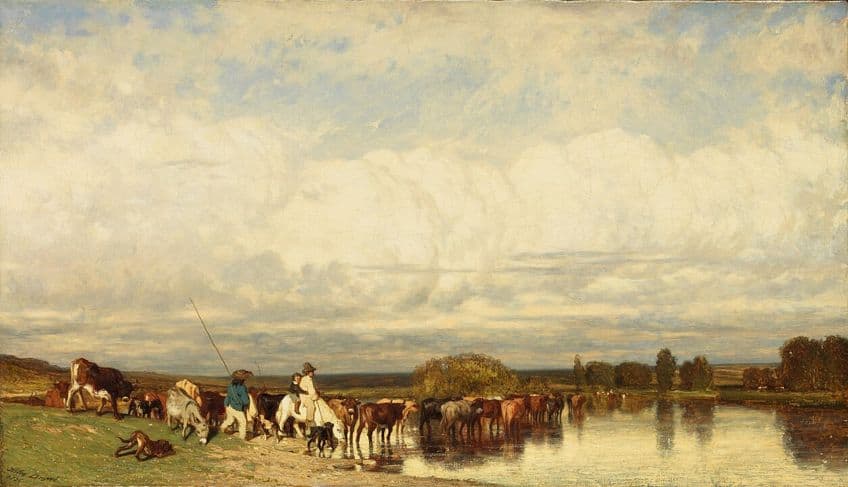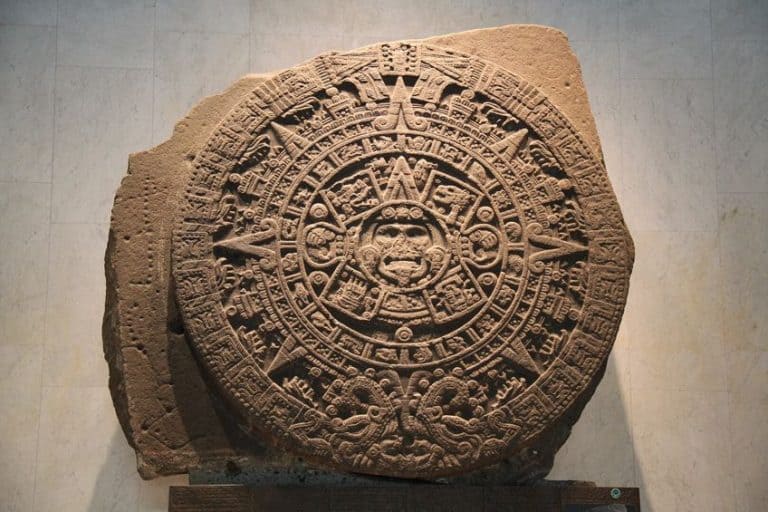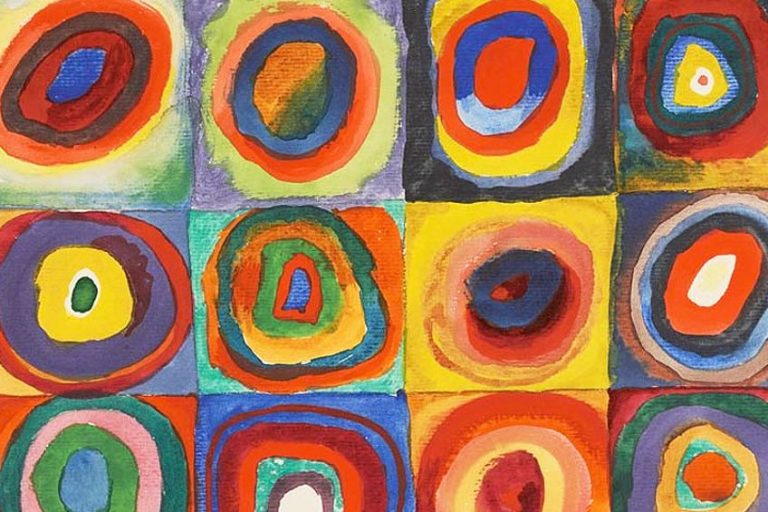Barbizon School – French Naturalism and Plein-Air Painting
The Barbizon School, a pivotal art movement in the mid-19th century, emerged in the village of Barbizon near the Forest of Fontainebleau in France. This group of landscape painters, active primarily between 1830 and 1870, sought to break away from the classical conventions of academic art, embracing naturalism and plein-air painting. Influenced by the Romantic movement and the writings of Jean-Jacques Rousseau, artists like Jean-Baptiste-Camille Corot, Théodore Rousseau, and Jean-François Millet depicted the serene beauty and raw simplicity of rural life and the natural world. Their works laid the groundwork for the later Impressionist movement, making the Barbizon School a cornerstone in the evolution of modern art.
Key Takeaways
- The Barbizon School favored realism and nature over academic historical painting.
- They pioneered techniques that influenced later art movements, including Impressionism.
- The group’s focus on painting en plein air marked a significant shift in artistic practice.
Historical Context of Barbizon School
The Barbizon School emerged in the mid-19th century, taking its name from the small French village of Barbizon on the outskirts of the Forest of Fontainebleau. This group of artists was integral to the transition from classical to realist approaches in painting. Rejecting the formulaic and historical subjects prevalent in the art of their time, the Barbizon painters focused on depicting the French countryside with a fresh sense of authenticity. Their collective approach was characterized by open-air painting, which brought about a more intimate and natural portrayal of the landscape and rural life.

During their active period, from roughly 1830 to 1870, the artists associated with the Barbizon School influenced the future of art by bridging the gap between Romanticism and Impressionism. Primarily landscape painters, they occasionally included rural laborers and scenes from village life, introducing elements of realism into their work. Artists associated with the Barbizon School not only captured the transient effects of light and atmosphere on the natural world but also imbued their paintings with poetic sentiment, steering art towards modernity.
Origins and Influences
The Barbizon School originated in the 1830s when a cohort of painters sought inspiration in the Forest of Fontainebleau near Paris. Disenchanted with the Romantic Movement’s emphasis on emotional expression through dramatic landscapes, they inclined toward the honest depiction of rural life.
John Constable’s naturalistic landscapes from England significantly influenced the Barbizon painters, signaling a shift from the Classical Tradition.
Key Artists and Contributors
Théodore Rousseau was central to the Barbizon School, often credited with being its ideological father. His dedication to capturing the essence of the Forest of Fontainebleau was contagious. Another pivotal figure, Jean-François Millet, focused on the dignity and toil of rural life. Charles-François Daubigny and Jules Dupré also became leading artists of this movement. Their collective work laid the groundwork for plein-air painting and emphasized the value of the observable world.

International Impact
The Barbizon artists played a crucial role in the international art scene. They bridged the gap between the Romantic Movement and Realism and later served as a stepping stone to Impressionism. The Revolutions of 1848, which swept across Europe, may have contributed to an environment ripe for such a transformation in art.
Their depiction of the natural world and the unembellished representation of rural life resonated beyond France, influencing artists worldwide to step out of their studios and engage with the landscape around them.
Key Artists of the Barbizon School
The Barbizon School is distinguished by a few prominent artists who significantly influenced landscape painting in the 19th century. Their work is characterized by a deep appreciation of nature, a pioneering approach to plein-air painting, and a preference for naturalism.

Jean-Baptiste-Camille Corot
Jean-Baptiste-Camille Corot was a pivotal figure in the Barbizon School, bridging the gap between traditional neoclassical landscape painting and the innovative plein-air practice.
Corot is celebrated for his contribution to landscape art, often depicting the French countryside with a muted palette and serene atmosphere.
Jean-François Millet
Jean-François Millet specialized in scenes of rural life, imbuing his canvases with a sense of dignity in labor. He is renowned for paintings like The Gleaners (1857), which highlight the backbreaking work of peasants, a subject previously considered unworthy of fine art.

Théodore Rousseau
The landscapes of Théodore Rousseau are noted for their textural richness and emphasis on the untamed aspects of nature. Rousseau’s dedication to capturing the Forest of Fontainebleau and his role as a mentor to other Barbizon artists underscore his importance within the movement.
Artistic Techniques and Themes
The Barbizon School marked a pivotal movement in the 19th century, characterized by a focus on naturalism and a revolutionary plein-air technique. The artists shaped their work with distinct tonal qualities and a commitment to capturing the essence of rural life.

Nature and Realism
The Barbizon painters were meticulous in their depiction of nature, striving for realism rather than idealization. Their canvases presented a truthful representation of the natural world, emphasizing softness of form and subtleties in lighting and color.
The depiction of forests, fields, and rural vistas illustrated a deep reverence for the environment and a desire to convey its authenticity on canvas.
Plein-Air Painting Method
These artists were among the first to practice plein-air painting, a method of painting outdoors that became central to their work. They carried their easels and paints into the countryside, capturing the transient effects of light and atmosphere. This practice allowed for a greater connection with the subject matter and contributed to the overall loose brushwork seen in their paintings. Painters like Jean-Baptiste-Camille Corot were known for their skillful use of this method.

Depiction of Peasants and Rural Scenery
Amidst a backdrop of changing landscapes and social structures, the Barbizon School chose to focus on the everyday life of peasants and the reality of rural scenery. Genre scenes, depicting the simple and often hard lives of the peasant class, were a recurring theme. Artists like Charles Jacque and Narcisse Virgilio Díaz brought these themes to life, highlighting both the beauty and the austerity of country living.
The work of these artists elevated such scenes from mere backdrops to subjects worthy of fine art.
Notable Artworks from the Barbizon School
The Barbizon School fostered numerous influential artworks that were pivotal to the Realism movement in 19th-century France. Here, we highlight several key paintings that exemplify the group’s signature approach to natural landscapes. Charles-François Daubigny is credited with exceptional contributions. One of his standout pieces is The Ponds of Gylieu. Painted in 1853, this oil on canvas reflects Daubigny’s keen interest in capturing the serenity of nature. Jean-François Millet produced notable works such as The Gleaners (1857), presenting a poignant view of rural life. This painting has become an iconic representation of the Barbizon School’s empathy towards peasant life.

Legacy and Influence
The Barbizon School’s impact extended beyond its time and borders, affecting future art movements and international artists, while its core group’s accomplishments set a precedent for the naturalistic depiction of landscape. The Barbizon School set the stage for Impressionism, with artists like Narcisse Diaz de la Peña leading the way through their innovative use of color and light. The school’s emphasis on painting en plein air (outdoors) directly influenced Impressionists.
They adopted this practice to capture the transient effects of light and atmosphere, which became a hallmark of Impressionist work.
Influence on International Art Movements
Internationally, the Barbizon School’s approach to naturalism inspired various art groups and colonies. The Hudson River School in the United States drew from the Barbizon emphasis on natural landscapes. Across the ocean, the Newlyn and The Hague Schools echoed the Barbizon’s focus on rural and coastal scenes. Elements of the Barbizon style also appeared in the work of Dutch and other European rural landscape painters.

Reinterpretation in Modern Art
Artists like Vincent van Gogh found inspiration in the Barbizon School’s direct observation of nature, refining it further to convey emotional resonance through bold and expressive use of color and brushwork.
The reinterpretation of their naturalistic approach continued to inform art even as Modern Art movements evolved.
Accomplishments of the Barbizon School
- Established landscape painting: The Barbizon painters were some of the first to consider the landscape an independent subject, worthy of fine art status, apart from historical or mythological narratives.
- Nurtured notable talent: Great artists such as François-Louis Français and Albert Charpin were part of the Barbizon School and significantly contributed to its legacy through their works.

After the Barbizon School
Following the dissolution of the Barbizon School, art colonies worldwide looked to its model for forming communities that provided mutual support and artistic exchange. The Barbizon legacy survives as an important chapter in the history of art, demonstrating the shift towards the emotional and perceptual in painting.
The legacy of the Barbizon School endures as a transformative chapter in art history, marking a shift towards realism and a profound appreciation for the natural world. By rejecting the idealized landscapes of academic tradition, the Barbizon artists paved the way for future movements that emphasized direct observation and the transient effects of light and atmosphere. Their dedication to capturing the authentic essence of rural life influenced subsequent generations, particularly the Impressionists, who expanded upon these principles. Today, the works of the Barbizon School continue to be celebrated for their pioneering spirit and their timeless depiction of nature’s unadorned beauty.
Frequently Asked Questions
Who Were the Prominent Artists Associated With the Barbizon School?
The Barbizon School included notable artists like Jean-François Millet, Théodore Rousseau, and Charles-François Daubigny. Camille Corot, although more closely aligned with the Realist movement, also spent time in Barbizon and is often associated with the group.
What Distinguishes Barbizon School Paintings Stylistically?
Barbizon School paintings are characterized by their naturalistic depiction of rural scenes, emphasizing the use of natural light and shadow, as well as the portrayal of different times of day and seasons. Their work often reflected a more emotional and less idealized representation of nature.
How Did the Barbizon School Influence the Development of Impressionism?
The Barbizon painters’ practice of painting en plein air and their focus on light and atmosphere directly influenced the Impressionists, who further explored these techniques with a brighter palette and more visible brushwork.
How Did the Principles and Practices of the Barbizon School Deviate from the Academic Art Norms of the Time?
The Barbizon School broke away from the formalism of academic art by rejecting historical and mythological subjects in favor of real landscapes. They prioritized direct observation and on-site painting, which was in contrast to the studio-bound practices prescribed by academic institutions.
Isabella studied at the University of Cape Town in South Africa and graduated with a Bachelor of Arts majoring in English Literature & Language and Psychology. Throughout her undergraduate years, she took Art History as an additional subject and absolutely loved it. Building on from her art history knowledge that began in high school, art has always been a particular area of fascination for her. From learning about artworks previously unknown to her, or sharpening her existing understanding of specific works, the ability to continue learning within this interesting sphere excites her greatly.
Her focal points of interest in art history encompass profiling specific artists and art movements, as it is these areas where she is able to really dig deep into the rich narrative of the art world. Additionally, she particularly enjoys exploring the different artistic styles of the 20th century, as well as the important impact that female artists have had on the development of art history.
Learn more about Isabella Meyer and the Art in Context Team.
Cite this Article
Isabella, Meyer, “Barbizon School – French Naturalism and Plein-Air Painting.” Art in Context. May 27, 2024. URL: https://artincontext.org/barbizon-school/
Meyer, I. (2024, 27 May). Barbizon School – French Naturalism and Plein-Air Painting. Art in Context. https://artincontext.org/barbizon-school/
Meyer, Isabella. “Barbizon School – French Naturalism and Plein-Air Painting.” Art in Context, May 27, 2024. https://artincontext.org/barbizon-school/.











